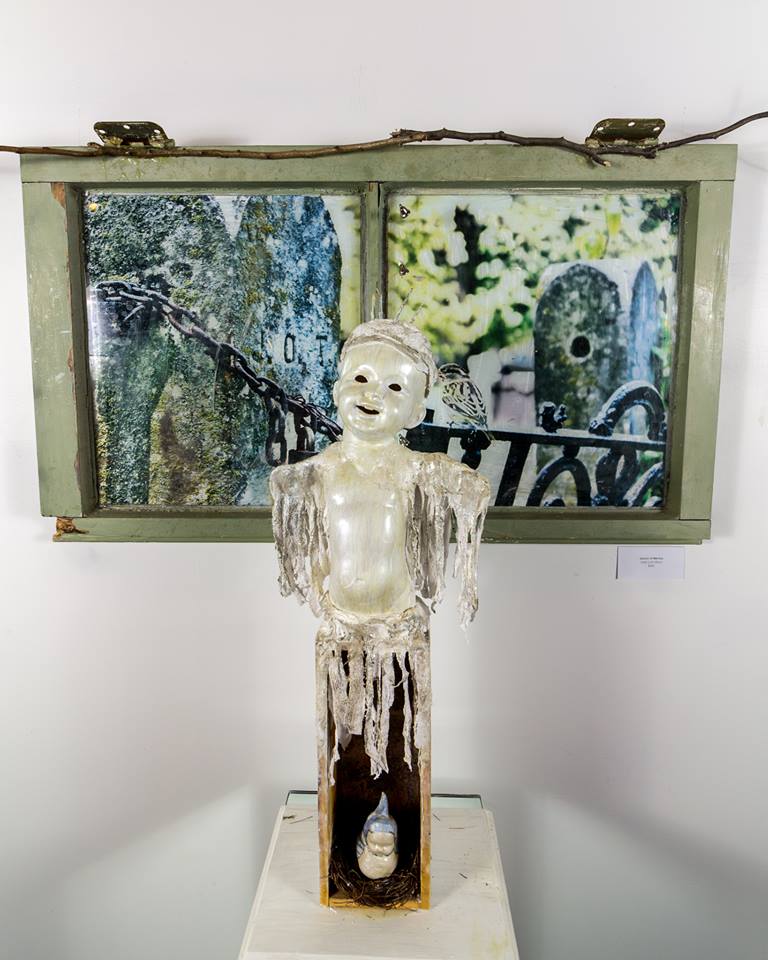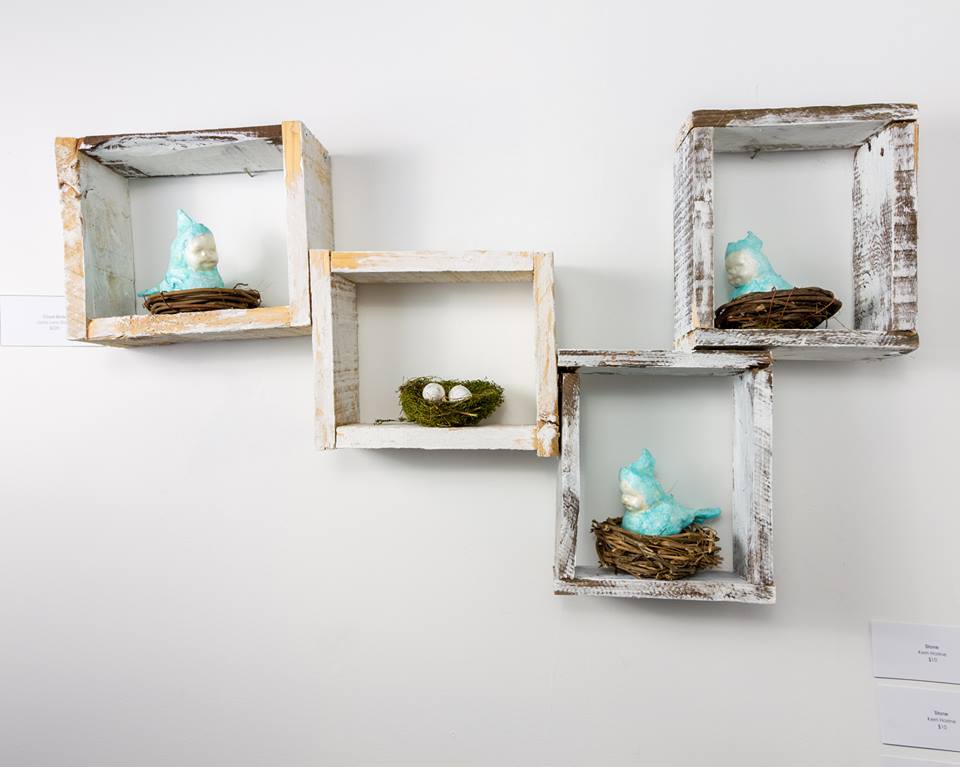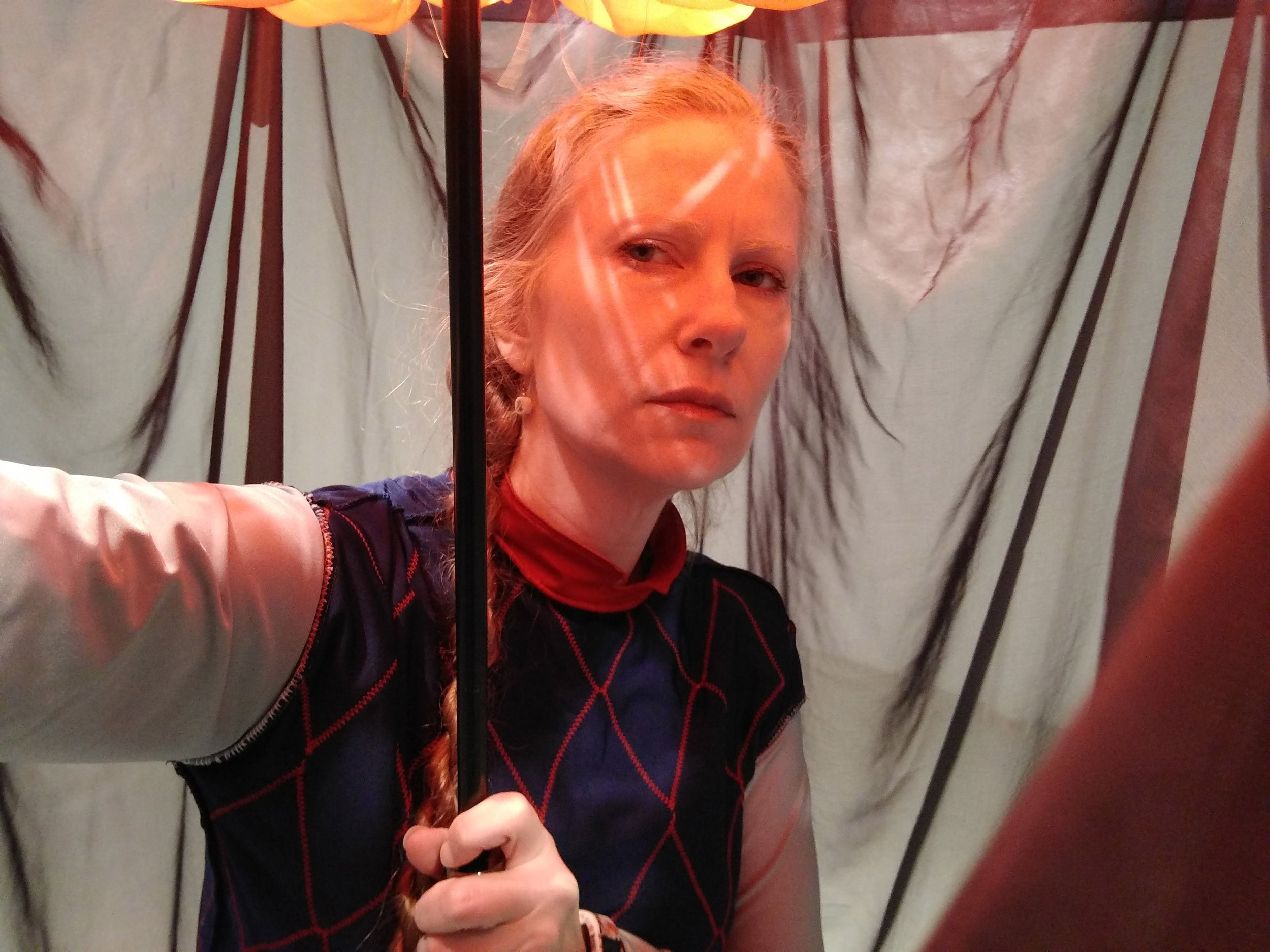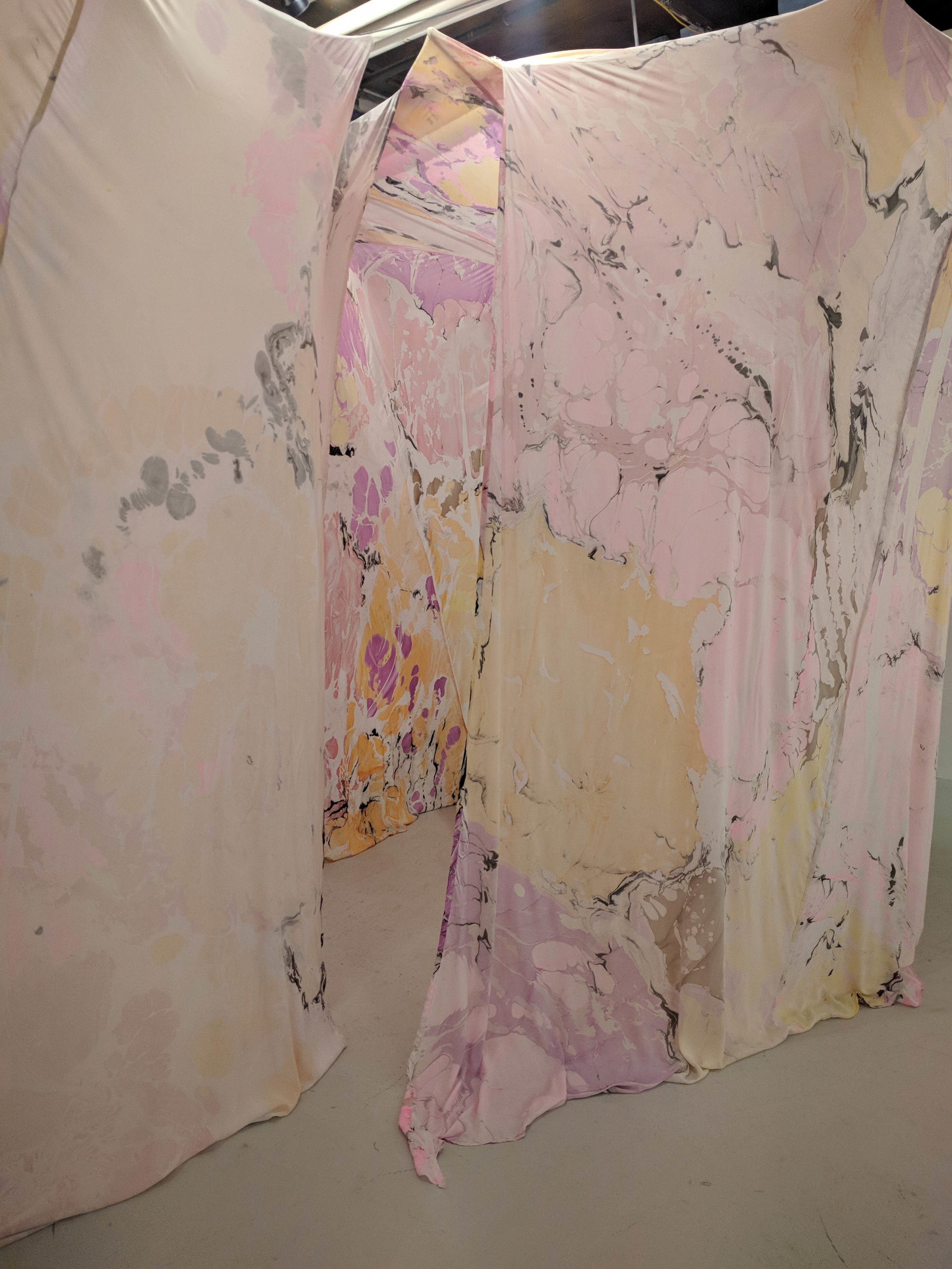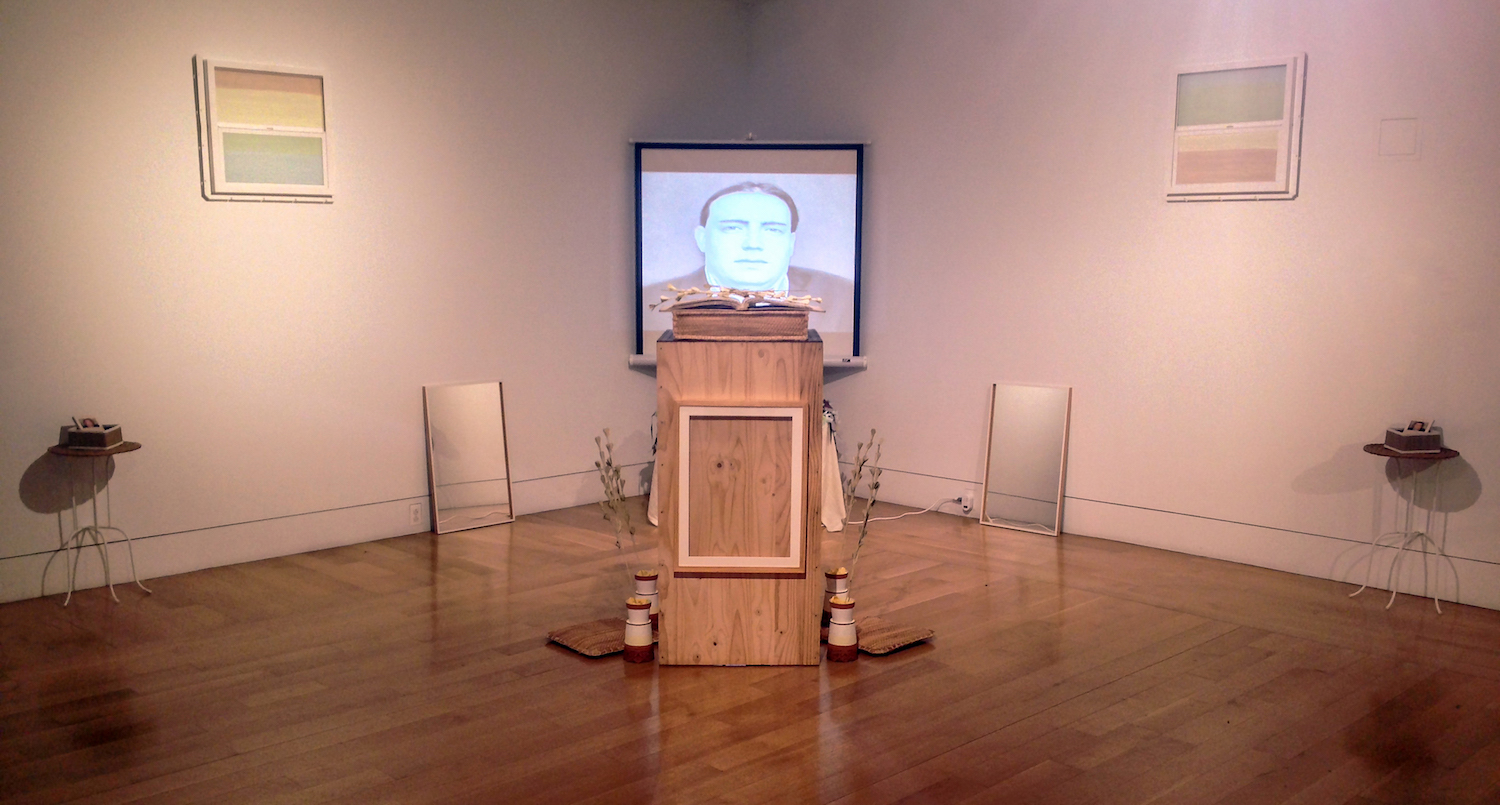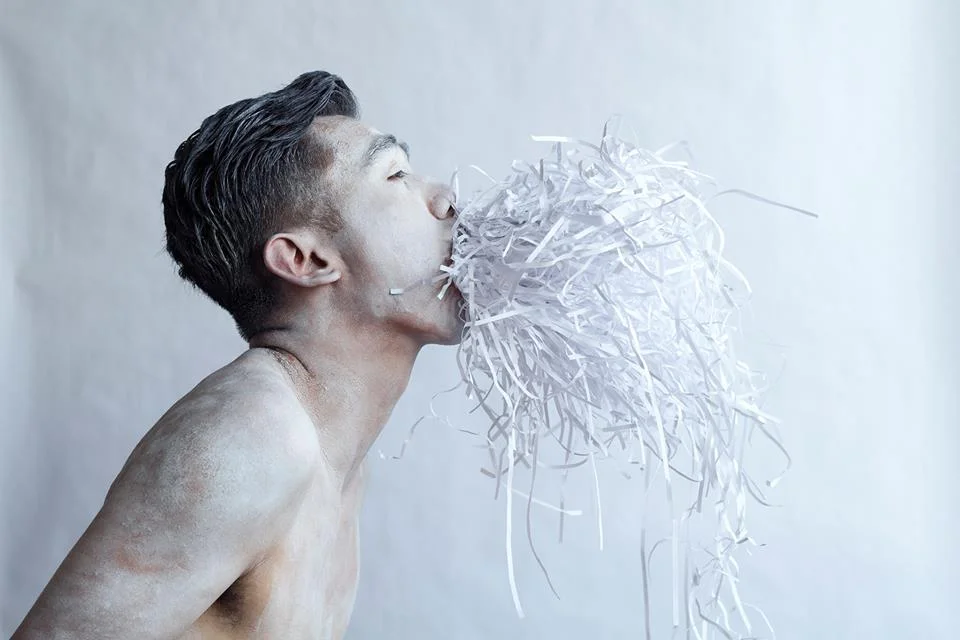“Clothesline Spirit” by Jada Lynn Dixon, Mixed Media, 26x12in, 2019, $300
It may oversimplify to consider that so much of what adult artists search for is a rediscovery of the simple, pure artistic expression of childhood; to clear away the responsibilities of family, employment, debt and other impediments of adulthood. In her most recent Artist’s Statement Jada Lynn Dixon connects her practice to her childhood experiences with great deliberation:
“I have a longstanding fascination with the idea of ‘Safe Spaces.’ There are many different definitions for this title, frequently personal, and can shield an individual from an emotional trigger. Other people may consider it a public space to receive help. As for myself, my grandmother and her creativity defined my version of a ‘Safe Space.’ I grew up in a very volatile environment, but fortunately had a devoted mother who tried her best to compensate. My Granny was a source of comfort. She was not an artist in the traditional sense, but crafted a series of pillow forts, clothesline tents, and shoebox dollhouses that occupied me for hours. These spaces kept me safe from anger, sadness, and uncertainty. I would watch eagerly as Granny took a simple cardboard shoebox and turned the bottom into a dollhouse with furniture created from the lid. I’d escape with it to a tent made from sheets on her clothesline, and exist safe in a created world for hours.”
“Little Sanctuary” by Jada Lynn Dixon, Mixed Media, 16x12in, 2018, $150
“Today my adult self enjoys ‘Safe Spaces’ in my artwork. I use wooden boxes, large canvases, cast resin pieces, clay, and found objects instead of shoeboxes and sheets to make meditative areas. My recent work incorporates a peaceful palette of pale blues, yellows and greens. Natural elements appear reclusively in many of my pieces, such as leaves, small branches, moss, and crystals. These reference the settings I enjoyed with my shoebox dollhouse, and it’s adornments. I work in a space created long ago, an emotional area originated by my grandmother, and perpetuated by materials and symbols that I associate with safety and happiness. It is my hope and intention that my viewers will find a moment of comfort and sanctuary in my pieces.“
Selected Exhibitions:
2018 Safe Spaces Dual Exhibit – Art Sanctuary, Louisville, KY
2018 Lexington Art League: PRHBTN 2018 – The Loudoun House, Lexington, KY
2018 Art at the Old Capitol (Juried) Featured Gallery Artist – Corydon, IN
2018 Cosmic Revelation LAG Annual Exhibit – KORE Gallery, Louisville, KY
2017 Funny Little Things Solo Art Exhibit - Day’s Espresso, Louisville, KY 2017 Art at the Old Capitol (Juried) Featured Gallery Artist – Corydon, IN
2016 Scars Group Exhibit – Tim Faulkner Gallery, Louisville, KY
2016 Trees Are Poems Group Invitational Exhibit - Cook Studio and Gallery, Louisville, KY
Hometown: Louisville, Kentucky
Education: Currently attending Kentucky College of Art + Design (KyCAD) for a BFA in Studio Art
Instagram: @jynnart
Scroll down for more images
“Cloud Birds” by Jada Lynn Dixon, Mixed Media, 26x12in, 2019, $350
“Luna Memory” by Jada Lynn Dixon, Mixed Media, 12x8in, 2018, $125
“Back Yard Spirit” by Jada Lynn Dixon, Mixed Media, 30x16in, 2019, $300
Written by Keith Waits. Entire contents copyright © 2018 Louisville Visual Art. All rights reserved. In addition to his work at the LVA, Keith is also the Managing Editor of a website, Arts-Louisville.com, which covers local visual arts, theatre, and music in Louisville.
Are you interested in being on Artebella? Click here to learn more.

